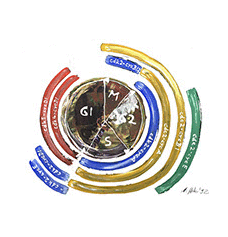Cell Cycle

For the last few decades, the mechanisms governing the eukaryotic cell division cycle have been the focus of widespread attention, partially because of their central role in tumorigenesis. Proper regulation of the cell cycle and the ability to execute accurate checkpoints is achieved by a well-orchestrated sequence of events, which guarantee the progression from one phase to the next, culminating in cytokinesis and cell division. Despite the cell’s ability to oversee and correct unintended occurrences, occasional errors may pass uncontrolled, leading to catastrophic consequences. The canonical activation of cyclin-dependent kinases (CDKs) by their respective cyclin partners is one such regulatory mechanism. We have identified major regulators that act on central nodes of the cell cycle in a spatiotemporal manner. In collaboration with Avram Hershko, 2004 Nobel laureate, who spent seven summer sabbaticals in my laboratory, we identified SKP2 as the substrate receptor of a CRL1 targeting p27, a major CDK inhibitor. We also dissected the role of SKP2, β-TrCP, FBXO1 (aka cyclin F), and FBXO11 in the control of other cell cycle regulators, such as p21, CDC25A, CDT2, CP110, claspin, EMI1, REST, RRM2, SLBP, and E2F family members. Moreover, we studied the regulation of centrosome duplication by β-TrCP and cyclin F, and the degradation of D-type cyclins by CRL4-AMBRA1.
